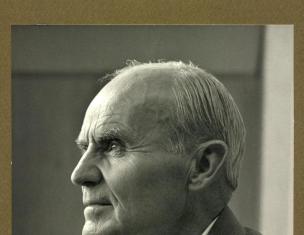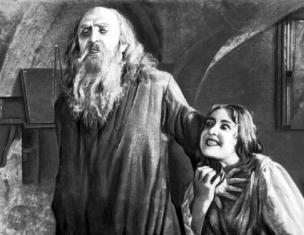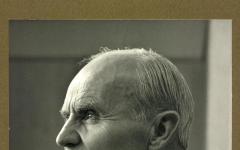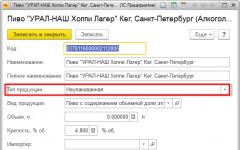In the Caucasus, a breed known as the Caucasian Shepherd Dog arose, which was used to protect herds and property from predators and robbers. Now her working qualities are more aimed at protecting not so much pastures as family and home. In this article we will talk about the characteristic features inherent in this breed, as well as the conditions that it requires.
Brief description of the breed:
- life expectancy: 10-12 years;
- litter size: 4-8 puppies;
- height: male – minimum 68 cm, female – minimum 64 cm;
- weight: male – minimum 50 kg, female – minimum 45 cm;
- activity: average;
- playfulness: low;
- Difficulty of parenting: above average;
- difficulty of training: average, there are difficulties due to the nature of the dog;
- attitude towards children: friendly, they can tolerate the pranks of children, but it is necessary to monitor their games;
- attitude towards strangers: hostile;
- attitude towards other animals: wary, socialization required;
- conditions of detention: life in the yard is preferable.
Exterior
The Caucasian Shepherd is a fairly large dog; its height is considered above average. The animal has a massive skeleton and well-developed muscles. There should be proportionality and harmony in the structure of the dog’s body: the length of the body is fifteen percent greater than its height.
Ideally, the Caucasian Shepherd is hardy, strong and powerful, without clumsiness - its movements should be free, confident and easy. However, dogs of this breed have five conformation types:
- tribal;
- exhibition;
- worker;
- depleted;
- fatty.
The Caucasian Shepherd Dog of the breeding type looks well-fed, with well-developed muscles. Such dogs receive properly balanced food, which contributes to the formation of a well-groomed appearance and excellent health.
The show type of this breed differs from the first only in the highest quality of care, including how good nutrition, and timely grooming.
The working type of Caucasian Shepherd resembles the breeding one, however, such animals are not so well-fed - a layer subcutaneous fat far less. Also, such animals may have a thicker undercoat if they were kept in cold conditions.
Protruding ribs and joints, lack of subcutaneous fat, muscle atrophy, dull and brittle hair - this is exactly what an emaciated Caucasian Shepherd looks like.
A fatty dog, on the contrary, has huge excess fat, which leads to lethargy and fatigue.
The last two types of appearance of the Caucasian Shepherd are obvious violations in its development. This can be caused by both congenital or acquired diseases and poor conditions.
In describing the exterior of the Caucasian Shepherd, it should also be mentioned that dogs of this breed can have one of three skull shapes:
- heavy (voluminous, with well-developed, visually visible muscles);
- light (narrow, with underdeveloped muscles);
- normal (proportional).
The ideal Caucasian Shepherd skull should be massive. Most of it is made up of the wide frontal region. The width of the dog's head is equal to the sum of the distance from the inconspicuous bump on the back of the head to the stop (the transition from the muzzle to the forehead) and the length from the stop to the nose.
The dog's voluminous, blunt muzzle should be a third of the length of the head (the distance from the highest point of the hillock on the back of the head to the nose). In an excited state, the dog may have slightly noticeable wrinkles in the frontal area. Also, the Caucasian Shepherd should have strong and wide jaws. Moreover, the lower jaw is quite heavy.
Varieties
Depending on their habitat, Caucasian Shepherds can be divided into several species, the main ones being:
- Georgian - massive long-haired dogs with a slightly elongated body and great height;
- Armenian – long-haired dogs of medium height;
- Azerbaijani:
- mountain subspecies - similar to the Georgian species;
- steppe subspecies - dogs with square shape body structure and dry muscles;
- Dagestan - dogs of this species differ from the Georgian in their large height and square body structure.
As in the case of the Azerbaijani species, all types of Caucasian Shepherd dogs can be divided into two subspecies:
- mountain - long-legged dogs with light structure square-shaped body;
- steppe - short-haired dogs of a strong and dry build with elongated shape skulls
Coat and colors
A dog's coat consists of three parts: the undercoat (fine and soft), the coat (thick and coarse), and sparse outer coats. The fur cannot fit tightly to the animal's body.
Caucasian Shepherds can be of three types:
- long-haired, with a mane, feathering on the paws, “pants”, and a fluffy tail;
- intermediate, without fringes and “pants”;
- short-haired, without mane, feathers or “pants”.
The Caucasian Shepherd can be wolf-gray, dark brown, white, fawn (with or without a mask), red (of varying intensity), motley, brindle or spotted color.
Short story
The territories around the Caucasus ridge, the steppes in the south of Russia - these are the places that are the sources of distribution of Caucasian shepherd dogs or, as they are called differently, North Caucasian wolfhounds. This breed has come a long way from the dogs that lived in the Caucasus in ancient times, through natural selection and the traditions of various Caucasian peoples.
Of the many options for the history of the origin of the Caucasian Shepherd breed, researchers identify two main versions. According to the first option, the ancestors of Caucasian Shepherd Dogs are the ancient Tibetan Great Danes, which were talked about back in 1121 BC.
To prove the confirmation of the second version, scientists point to ancient images of animals that served as guards of the walls of the state of Urartu. Their appearance is similar to that of modern Caucasian Shepherd Dogs. Since this state existed from the eighth to the sixth centuries BC, researchers are inclined to assume that the ancestors of the Caucasian Shepherd were already there then.
Mentions of dogs of this breed as animals performing guard and security service in the ranks of the Turkish army were preserved in Turkish military records of 1765. When conquering the Caucasus, the Russian command immediately enlisted Caucasian Shepherd Dogs into its troops for security and guard duty.
In general, Caucasian Shepherd dogs have long been used as guards both in war and in peacetime. They protected the herds and property of their owners from predators and raiders.
In the twentieth century, at the end of the twenties, USSR breeders began work on producing a breeding line of Caucasian Shepherd dogs. As a result, they were able to consolidate in dogs of this breed such characteristic features as courage, confidence, power, well-developed vision and hearing, and high-quality coat that can withstand any weather conditions.
The officially registered RKF for this breed was adopted in 1997. Caucasian Shepherd Dogs have been able to retain their abilities for guard and security activities to this day.
Temperament
Caucasian Shepherd Dogs are very intelligent and prone to making their own decisions, especially in the field of protection and guard duty. These dogs have an unusually successful combination of natural instincts and the ability to learn - the animal’s innate intelligence helps with service training.
Such an excellent characteristic does not mean that the dog is able to exist next to a person without his constant intervention. Therefore, such a pet must be purchased to fulfill certain work, and not just as a pet.
The Caucasian Shepherd is capable of faithfully serving its owner and his family until the end of its life. But she can treat strangers with pronounced hostility. Of course, the dog will not suddenly attack the guest, but it may greet him with a loud bark. But these animals can smell negative people a mile away and will never allow them to come close to their owner.
Being sensitive dogs, Caucasian Shepherds openly demonstrate a kind attitude towards children, trying to protect them and save them from possible dangers. Such pets do not like meaningless games, but they can condescend to the children and devote a couple of hours of their precious time to them. Adults must supervise children's games with animals. If they hurt the dog, it may bite them.
The relationship between pets and Caucasian Shepherds depends on various circumstances. If they grew up together, the dog will protect other pets as members of its pack. She can also accept a small family member. If the dog has become acquainted with an adult pet, then conflict situations in the struggle for territory cannot be avoided.
Caucasian Shepherds can quickly establish friendly communication with other dogs. However, they sometimes show aggression towards possible rivals in the fight for territory or a female.
Socialization is very important for the Caucasian Shepherd. If the dog is not introduced to other people and animals, then while still a teenager, it will begin to perceive any moving creature as a threat.
Health problems
Despite their excellent health, Caucasian Shepherds may be prone to diseases such as:
- articular dysplasia;
- heart disease;
- arthrosis;
- arthritis;
- cataract;
- entropion
The necessary conditions
Dogs of this breed can live in an apartment, but without daily walking, the life of the owners can turn into a disaster. Unspent potential will turn the Caucasian Shepherd into nervous dog, destroying everything in its path.
Therefore, it is best to keep such a pet in the courtyard of a private house, where it can splash out its accumulated energy every day.
But even in this case, the owner will have to walk the dog outside the fence. The short-haired Caucasian Shepherd does not need careful. Brushing a couple of times a week with a massage brush is enough. Owners of intermediate and long coat types will require periodic brushing from the owner (at least three times a week) using a suitable comb, for example, with medium-length teeth.
During seasonal shedding, dogs of this breed will need daily combing of dead hair. A slicker brush will be needed for individuals with long hair. For short-haired dogs, a comb with rounded teeth is suitable.
It is worth carrying out water procedures with the addition of shampoo as rarely as possible, about two to three times a year. The exception is heavily soiled wool.
Specifics of training
An independent and straightforward Caucasian Shepherd, whose character can be quite aggressive and uncontrollable, is inclined to accept the dominance of the owner, despite the leadership qualities inherent in it. The owner’s task is to take the reins into his own hands in time.
If you start with a puppy, the owner will receive an adequate and obedient dog, capable of carrying out any order with lightning speed.
Firmness in decision-making, timely encouragement, consolidation of skills by repeating lessons learned, love and respect - this is the only way to achieve obedience from a Caucasian Shepherd. A pet’s good memory is a huge plus for learning. If the owner can teach the puppy something, then it will remain in the consciousness of the puppy. adult dog until the end of her days.
What is your dog's character?
You may also be interested
One of the most large breeds The dog is the Caucasian Shepherd. The height of its representatives can reach 75 centimeters, and the weight of adult males can be up to 110 kilograms (on average about 70). Due to their lush, thick coat, these dogs look even more massive, although there is also a short-haired type of the breed.
Photos of Caucasian Shepherd puppies
Quite often this breed is also called “alabai”, which is not correct. After all, Alabai is a completely different (albeit very similar) breed - . Among the coat colors characteristic of “Caucasians” are brown, wolf-gray, red, motley, fawn, and white.
Caucasian Shepherd puppies - photo 1 month

Photo of a Caucasian Shepherd puppy, 1 month old, nickname Sabur (shared by Susanna Rudobaba).

Caucasian Shepherd puppy - photo at 1.5 months, shared by Dmitry Gennadievich.

Caucasian Shepherd puppies - photo 1 month. The baby is named Balu, shared Katerina Alikperova.

Caucasian Shepherd puppies - photo at 1.5 months (pupils of the Dombay-Ulgen kennels).
Breeders write that at birth puppies of this breed weigh 500-800 grams. In just a month, they grow significantly and already weigh from 3 to 4 kilograms.
Since the breed is large, it is very important to feed the puppy properly. A growing body needs many useful substances (including vitamins, minerals), which, for example, cheap economy-class food cannot provide to a dog.
Caucasian Shepherd puppies - photo at 2 months

Anastasia Sadovnikova shared a photo of a Caucasian Shepherd puppy at 2.5 months.

Caucasian Shepherd puppy photo at 2 months, nickname Bai (shared by Sergey Mozharovsky).
On forums, owners of babies of this breed note that their pets at the age of two months weigh from 8 to 12 kg. That is, a small “Caucasian” is already several times larger than, for example, an adult Chihuahua.
Photo of Caucasian Shepherd puppies at 3 months

Photo of a Caucasian Shepherd puppy (3 months old, nickname Janan). Victoria Kardash shared.

Janan, age 2 months and 3 weeks).

Photo of a Caucasian Shepherd puppy named Sabur, 3 months old. Shared by Susanna Rudobaba.
At the age of three months, puppies already reach a height of 46-51 cm. Simply put, even babies of this breed will already require quite a lot of space, which means it is better not to have them in a small apartment.
Photo of Caucasian Shepherd puppies at 4 months
No photos yet.
Caucasian Shepherd puppies at 5 months (photo)
No photos yet.
Caucasian Shepherd puppies at 6 months - photo
No photos yet.
Photos of puppies and dogs of other ages


Caucasian Shepherd puppy (11 months), photo from Sergey Lavrentyev.

Photo of white Caucasian Shepherd puppies.

"Caucasian" named Morgan, 10 months old. Photo by Yana Kulik.
Puppies reach their final size at 12 months (one year) of age.
Video: Caucasian Shepherd puppies
To more clearly understand what baby Caucasian Shepherds look like, be sure to watch the video above. It shows puppies a little over a month old, from the Sormovskaya Zarya kennel, located in the city of Nizhny Novgorod.
Interesting Facts about Caucasian Shepherds
- The Caucasian Shepherd breed is one of the oldest, more than two thousand years old;
- As in the past, these dogs are now used to protect flocks of sheep from attacks by wolves.
This concludes our selection of photos of Caucasian Shepherd puppies. In the future it will be supplemented as photographs of these rather large babies at the age of 4, 5 and 6 months are found.
It is probably difficult to find a person who has never seen this handsome man, even in a photo. Huge size, shaggy fur, appraising gaze... There is something to look at and something to be afraid of. Perhaps this is why most people perceive the Caucasian as a dog created solely for aggression. But this is far from true.
The history of the Caucasian Shepherd goes back more than 3 thousand years. This is, first of all, a working breed, it is endowed with physical characteristics, as well as strong character not for attack, but for defense. Protection and protection of its owner, his family and property. Unbridled aggression and mental imbalance are the result of improper upbringing or selection. This characteristic has nothing to do with a real Caucasian Shepherd Dog, because guarding and aggression are incompatible things.
Professional breeders carefully monitor not only the external characteristics of the puppies, but also their mental characteristics. Therefore, when buying a puppy secondhand, you must understand that low price could lead to trouble in the future. The price of a Caucasian Shepherd from a good breeder will be $500-1000. The better the breeder's reputation, the higher his price will be. After all, it includes not only the maintenance of a puppy, but also many years of work with trusted parents. If a dog is purchased specifically for protection, then in this case the price of a Caucasian dog is not surprising at all, since you can be sure that he will perform his service with all his inherent dedication.
Description of the exterior of the Caucasian Shepherd according to the breed standard
I divide the breed varieties depending on the area of residence: Georgian, Armenian and Azerbaijani shepherd dogs. The breed standard is described from the Georgian type. This is also the so-called mountain type of Caucasian Shepherd Dog. They are the largest and most powerful, and also have the longest hair (see photo).
The height of an adult female is 64-69 cm, that of a male is 68-75 cm. The weight of “girls” fluctuates around 45-65 kg, the weight of “boys” is 50-70 kg.

Body
The entire bone structure of the Caucasian Shepherd is well built, massive and wide. The withers stand out well, the loin a little. The back is strong and straight, and the chest is wide and deep. The whole body is very muscular, especially in males.
The tail of dogs is set high, in a calm state it is lowered and curved like a sickle (see photo).
Head
The head of Caucasians is also large in proportion to the body. Moreover, males have larger heads than females, which is clearly visible even in the photo. Wide cheekbones and muzzle gradually taper towards the tip of the nose. The nose is large, preferably black. The jaws are massive and strong, with a scissor bite.
Dogs' eyes are oval, normally set, slightly slanted. It is desirable that the eye color be any shade Brown. The expression of the eyes is also important. It must be alert and attentive, this can be seen even in the photo.
In the Caucasus, it is customary to crop the ears of this type of shepherd dog, especially if the dog is intended exclusively for work. Although these dogs' ears are naturally small. They have a triangular shape and are set quite high (see photo).
Limbs
Both the front and hind limbs of shepherd dogs are long, straight, parallel, and widely set. They are very muscular, strong, well defined joints. The paws are large and oval. Such limbs allow the dog to move freely and springily.
Coat and color
The Caucasian Shepherd has a double coat: a soft and warm undercoat and a straight, coarse coat. The length of the fur cannot be less than 5 cm. On the tail the fur is fluffy and thick, but on the face and limbs it is shorter. Dogs with longer hair have a characteristic mane, ear tufts, and leg tufts (see photo).
The color of shepherd dogs can be very diverse: most often these are various shades of gray, brown, brindle, red with a dark mask on the face and light spots on the neck, chest, belly, paws and tip of the tail. Piebald and spotted colors are also possible (see photo).
Pet care and health of the Caucasian Shepherd breed
First of all, it is worth noting that the content of this large dog not cheap, and also requires a significant investment of time. Those who want to associate themselves with a Caucasian Shepherd need to remember that these dogs do not live in apartments. Ideally, a spacious enclosure in the yard will suit them. We must not forget that strangers The dog is extremely distrustful. Many reviews contain stories that over time the pet had to be put on a chain. But there are also reviews that say that Caucasian Shepherd dogs live quietly in yards, without being tied or locked in enclosures.

Caucasian Shepherd Dog Coat Care
The long fluffy fur of a Caucasian is his pride and color. But the owner will have to keep an eye on it. It is worth brushing the coat as often as possible, preferably daily. Also, to make the coat look healthy and well-groomed, it is recommended to bathe the dog approximately once every 3 weeks using special mild shampoos.

Caring for your pet's fur should be a mandatory procedure from the very beginning. early age so that an adult dog can withstand such a procedure. Detailed description Photos and videos of combing and bathing procedures can be found online.
What to feed the Caucasian Shepherd?
There is a myth that the Caucasian Shepherd needs to be fed buckets of dry food or tons of raw meat. Of course, for such a large animal the portion should be appropriate, although the dog eats relatively little. In general, the dog is unpretentious and can eat anything, but if you want to be sure that your pet gets everything necessary for the health of the body, you should treat your dog’s diet responsibly.

Many breeders recommend feeding Caucasians both dry food and natural food. When it comes to natural foods, raw meat is best, but tripe can also be included. Puppies can also be fed dry food and raw meat, but it would be a good idea to include dairy products in their diet.
An adult dog needs to be fed 2 times a day, and in some periods when the dog’s body is weakened, even 3 times. How much food or meat should be in each serving is calculated depending on the weight and age of the dog. It is recommended to feed puppies at least 5 times a day, gradually reducing the number of meals, but increasing portions. After all, during the first year of life, a puppy gains weight, like an adult dog. The weight of a newborn puppy is less than 1 kg, and the weight of an adult dog is on average 70 kg. Sometimes the weight of an adult dog can reach 100 kg. It is clear that in order for a puppy to gain weight so rapidly, he needs to be fed not only more often, but also with high quality.

It is not difficult to calculate how much such a diet will cost. Future owners should be prepared for the fact that they will have to regularly spend considerable amounts of money on food for their pet. But if you feed your dog incorrectly, the cost of veterinary services can be much higher.
Breed health
Since the breed was developed through natural selection, it boasts good health. These dogs live on average 10-11 years. They do not have hereditary diseases, but they can develop acquired diseases if the dog is not kept correctly, especially if it is fed incorrectly.

A risk factor, like most large dogs, the dog may be overweight, which in some cases can cause hip dysplasia and heart disease.
Character of the breed and education of the Caucasian Shepherd
The guarding and watchdog qualities of this breed are key and influence its character. The character of a Caucasian is strong and confident; he can dominate and will do so if he is brought up incorrectly. But, if the puppy has been raised since childhood, instilling in him a sense of ownership and family, then you can fully expect that he will grow into a calm, devoted, but also vigilant dog.
Even a small puppy can exhibit a bold and fearless character. So, some breeders recommend when choosing a puppy to clap loudly and watch his reaction. A true Caucasian will either be interested in such loud sounds, or remain neutral, but not afraid. It is worth noting that the dog will not react to minor irritants.

Many reviews from owners and breeders of Caucasian Shepherds say that these dogs are obedient from birth, and they are very easy to raise. Unfortunately, this is not entirely true. In order for a puppy to grow up to be a truly obedient, working dog, you will have to work hard on raising it. Of course, even untrained puppies will have protective qualities, but they may completely misunderstand what needs to be protected and from whom.
Therefore, raising a Caucasian Shepherd puppy should be done by a person who not only has enough time for this, but also a strong character and skills in handling dogs. After all, a Caucasian has a character no less strong than his body, and he will only obey the stronger leader of the pack.

As for training, despite all the intelligence and intelligence, representatives of this breed are recommended to be trained by professionals. For those who have never encountered this breed, an initial training course will even be mandatory. Well, owners who plan to use a dog for protection are better off sending it to a specialized course for training.

Caucasian Shepherd puppies, like puppies of other large breeds, take a long time to mature. Therefore, the process of education and training is quite long. Some reviews indicate that it is possible to train Caucasians even when they are quite old.
When people and dogs live together
The devotion of the Caucasian Shepherd is legendary. The Caucasian is a dog of one owner. Many reviews indicate a huge emotional connection between owners and pets. This includes unconditional mutual understanding, boundless trust, and, of course, love and devotion.

As for the owner’s family, in particular children, you should still be careful here. Although the pet understands that the family belongs to the owner and needs to be protected, an adult should definitely supervise the dog’s interactions with children. With family friends, the dog will most likely behave warily and distrustfully, thereby showing that he remembers his owner very well, knows him and will never betray him.
Not many dogs have the same strength as Caucasian Shepherds. These dogs are distinguished by their reckless courage and are able to protect their family members from a predator of any size. In his desire to protect property and people close to him, the Caucasian shows all his rage and anger, so it is not for nothing that representatives of this breed are compared to a weapon. Where did these extraordinary dogs come from and how can you manage the giants?
Caucasians are among the oldest breeds that have undergone strict natural selection for the right to be close to humans. Based on archaeological data, the age of the rock exceeds 2500 years.
What is known for certain is that the ancestors of Caucasians are the old-type Tibetan Great Danes. Before our era, they were the embodiment of the classic Molossians - ponderous, infinitely loyal to their own, and ferocious towards their enemies.
It is believed that the dogs came to Chinese territory when a puppy of this breed was presented to the emperor. Representatives of this breed were immediately appreciated in Asia, and they spread quite quickly - first in Mongolia, Mesopotamia, and then, through the territory of the Caucasus, they penetrated into Rome and Greece.
According to the “mythical-historical” version, the early Caucasians were able to resurrect the ruler of Armenia, Ara the Beautiful, by licking his wounds. Somewhere around this time, the separation of the Caucasian and. The former were strictly selected based on their working qualities, the latter remained in their native territory and were practically not modified. There is some evidence that, unlike the Central Asians, who guarded the territory as a whole group, the Caucasians did this alone or in pairs.
The Caucasian lands are distinguished by their extraordinary beauty, rich nature and difficult, rather harsh climatic conditions. In addition, the difficult mountainous terrain became a “transit” road for traders and conquerors. The ancestors of Caucasian Shepherds were able to “temper” their character in such difficult living conditions, and their steadfastness was passed on modern dogs this breed. Life at the crossroads has influenced many of the breed's traits and qualities. The characteristics inherent in the Caucasian lands determine the main differences between Central Asians and Caucasians.

In their native territories there was also a division of dog activity. Molossian dogs from mountainous regions were used for herding and guarding. In pastoral areas, the breed was called Caucasian Wolfhounds, and Molossians, which were bred in cities, were called Empire dogs. In the latter case, animals performed security functions and participated in military campaigns. The character of modern Caucasians can be traced characteristic, inherited from our ancestors – hatred of wolves and strangers.
Among the evidence that dogs were respected were their images on the coats of arms of princely families. In those days, there were several varieties of Caucasians; in fact, each nationality had its own type of dog. Unofficially, such a division exists in our times. However, Russian breeders and others were interested in these dogs. Then work began to transform the indigenous breed into a factory breed.
For many years, activities have been carried out to improve the qualities of Caucasians. The dogs were made suitable for living in the city. But poor quality breeding and an unfavorable urban environment have significantly shortened the lifespan of pets (about 10-12 years), although previously the animals lived much longer.
The development of the breed took a long time, and standards changed several times. The latest version was approved by the Fédération Cynologique Internationale in 2010.
Description of the Caucasian Shepherd breed
The latest standard states that representatives of this breed have a coarse body type, with well-developed, voluminous muscles. Height males vary between 72-75 cm, average weight – 50 kg, females are slightly lower, their height is approximately 66-69 cm, and their weight is 45 kg.

The main characteristics of the Caucasian Shepherd include the following description:
- Dogs have a large, massive head with a mane. The forehead is wide, convex, and the lips are thick. The muzzle ends in a large nose, pigmented black. The ears are small and oval in shape. The eyes are small, deep-set, with an attentive and wary gaze. The teeth are large, scissor bite.
- In dogs, wide, long breast, strong, straight back with developed muscles. Small of the back wide, convex, short and muscular. Tail set high, limbs parallel. Paws big, round.
- Wool straight, tough.
Among the possible disadvantages of the breed, experts note the following:
- underdeveloped skeleton;
- too stretched body;
- looseness;
- short and soft coat;
- there is a risk of sagging eyelid skin.
Any deviation from the approved standard is automatically considered a deficiency.
Read also:
Colors of the Caucasian Shepherd
There are several colors of dogs:

Character of Caucasians
Modern Caucasian Shepherd Dogs, although they have retained their large size and stern appearance, have a rather sweet and friendly disposition. This increased the popularity of representatives of this breed. And their amazing adaptability to any climate allows them to live in a wide variety of climates, as well as in home and outdoor conditions.
Caucasians are self-confident and not fussy, this allows them to react adequately when faced with extreme events. Even danger cannot unsettle the pets; their actions are unmistakable.

Caucasian Shepherds are persistent, fearless, and decisive. They have well-developed protective qualities, and at the level of instincts there is distrust of strangers. In addition, Caucasians, like all shepherd dogs, have developed intelligence, balanced temperament and are well trained.
Only family members inspire trust in dogs, but the attention of the owners is also very important for the pet. The shepherd is ready to guard and protect the family around the clock, and it is especially kind to the younger members of the family. The pet perceives them as his flock, carefully ensuring that not a single child strays from the rest. It’s not a dog’s rule to offend little ones, and she always plays with pleasure.
Of course, the foundations of character are laid at the level of instincts, but the upbringing and training of a pet is no less important.
How to raise and train a Caucasian Shepherd
To do this, you must have confidence and strong character. It doesn’t matter how physically developed the owner is, but he must be consistent in his actions and demanding.
It is not recommended to do this on your own; it is better to contact a dog handler or take a training course. The specialist will not train the dog himself; he will help the owner to better understand the pet and react correctly in certain situations. After the initial stage has been completed, the owner will be able to cope with further education himself, because the dog will master the necessary commands and rules.

Dog breed Caucasian Shepherd photo
Caucasians are very fond of fetching, so you can ask your pet to run after a stick from a very early age. The intelligence of a Caucasian allows a dog not only to acquire knowledge, but also, if not properly trained, to take advantage of the weaknesses of its owners. Therefore, from the first days, owners should focus on what the baby can do and what is prohibited for him. And it is important to immediately show the puppy who is the leader in the family.
With the right approach, your pet will quickly learn where to relieve itself and learn to refuse treats strangers and eating garbage from the ground. It is important to immediately limit biting hands and feet, even during play, as well as jumping on the owner with its paws, since the grown giant will behave in the same way.
It will be interesting:
Maintenance and care of Caucasians
The thick coat of the Caucasian Shepherd does not cause much trouble, but requires regular brushing. It is recommended to comb out outdoors using a special large brush suitable for long coats. For a Caucasian, once every six months is enough, of course, and you can also bathe the dog as it gets dirty.
The most important responsibility of a dog owner is regular. In this regard, Caucasians are not very demanding, since it is in their nature to accumulate energy and not waste it on aimless wanderings. It is enough to spend an hour and a half a day on this, inviting your pet to run around just like that or fetch some object. 1-2 days a week should be set aside for intense exercise with mandatory training or repetition of acquired skills. No, the dog has an excellent memory, but he needs to maintain excellent physical shape.

Caucasian Shepherd dog in the photo with the owner
The Caucasian Shepherd needs food, which, in fact, applies to representatives of any breed. Yes, and there is no special wisdom here. More often they practice one-time feeding with mandatory adherence to the regimen. But this applies to adult pets, while young animals up to 2.5-3 years old are fed 2 times.
When choosing natural products, you should not forget that the main product of the diet is meat and offal. Their daily amount is 800-1000 grams. If meat can be given in any form, then the offal must first be boiled. Street pets in winter period You can periodically give boiled lard or meat. The diet also includes porridge cooked in water, meat or vegetable broth, vegetables - fresh and boiled, greens. Eggs are given boiled, but not more than 1-2 times a week. Prohibited foods include potatoes and legumes.
If the choice falls on ready-made commercial diets, then you should choose high-quality feed - premium and super-premium categories. They better meet the needs of the dog, and their consumption is much less.
Photo of a Caucasian Shepherd dog






Video about the Caucasian Shepherd
How much can you buy a Caucasian Shepherd puppy for?
The price depends on many factors - coat color, gender, size, presence of pedigree and titled parents, location of the nursery and targeted delivery. The largest baby in the litter usually costs more. The average cost of a Caucasian Shepherd puppy in kennels in Moscow and the Moscow region is 15,000 rubles. On the Internet, the price varies from 5,000 to 60,000 rubles.
Caucasian Shepherd puppies look like cute bear cubs, but when taking a pet into your home, you should immediately take into account that this is not a toy, but a serious animal that requires a certain approach.
Caucasian Shepherd Kennels
- Moscow http://valkiriydog.ru
- St. Petersburg http://tskaro.jimdo.com
- Kyiv http://ko-ua.security-dog.org/page_rus/
Caucasian Shepherd Dog.
History of the breed
The origin, development and improvement of the breed, as can be seen from the name itself, is associated with the Caucasus. There are several versions explaining the origin of dogs of this breed. Two are considered the most reliable among them.
According to one of them, dogs of the Caucasian breed (Caucasians) trace their origins to Tibetan Great Danes. The Chinese version of the name of this breed is Tibetan baiting dogs.
According to another version, the origin of the Caucasians is connected with the state of Urartu, which existed in ancient times on the territory of the Caucasus. Thus, presumably, these dogs were already present in the Caucasus at that time.
The breed was formed both through natural selection and under the influence of demands placed on dogs by humans. Purposeful selection work with the breed has been carried out since the late twenties of the last century.
Photo of a Caucasian Shepherd. 
Photo of a Caucasian Shepherd. 

Description of appearance
Appearance Such dogs are quite remarkable. They resemble large teddy bears and involuntarily attract attention. This is a powerful dog of impressive size. Individuals of this breed are characterized by strong, well-developed muscles and strong bones.
The maximum height of a male dog reaches 75 centimeters, and its minimum height is 65 centimeters. An adult Caucasian typically weighs 60-70 kilograms, and in some cases 100 or even more kilograms. Females, unlike males, have a height of 62 centimeters, and their bones are not so large and heavy.
The breed standard defines three types of coats for Caucasian Shepherd dogs. These are short, long and intermediate types. The first one is the least popular, and the second one is the most common. Long-haired Caucasians are distinguished from other species (short-haired and intermediate) by the presence of a neck mane, as well as a dewlap and breeches on the back of the limbs. Their tail is thick and fluffy, as it has a special wool covering.
The color of Caucasian shepherd dogs is wide range gray with a predominance of light colors, occasionally with tan. There are also red, motley, speckled and spotted colors.
Individuals of this breed have a superbly built body, a massive head with a large skull, which is longer than the muzzle, and a wide, flat forehead. The nose is black, wide, and the lips are thick, tight-fitting and dry. The white teeth of Caucasians, although rare, are strong and developed. The head sits on a short powerful neck. The ears are set high, drooping, and most often cropped.
The chest has a slightly rounded shape, wide and drooping. The straight, well-muscled back extends into a short and slightly rounded lumbar region. The high tail either hangs down or is curled and carried over the back. The paws of these shepherd dogs are oval-shaped, dense and neat.

Photo of a Caucasian Shepherd. 
Photo of a Caucasian Shepherd. 
Breed characteristics
Caucasian Shepherds are brave, persistent, and decisive. These dogs exhibit traits of a bright, strong, independent character. This nature of them, subject to insufficient education and poor training, promises possible difficulties in communicating with them. At the same time, these characteristics perfectly meet the requirements for guard dogs.
A certain part of dog breeders are wary and prejudiced towards the Caucasian Shepherd, claiming that these dogs are poorly trainable, aggressive, and uncontrollable. However, the entire history of the relationship between man and the Caucasian Shepherd shows that with proper upbringing and training, dogs of the Caucasian breed can become infinitely faithful guards and devoted, balanced friends.
Photo of a Caucasian Shepherd. 



Caucasian Shepherd Dogs. 









